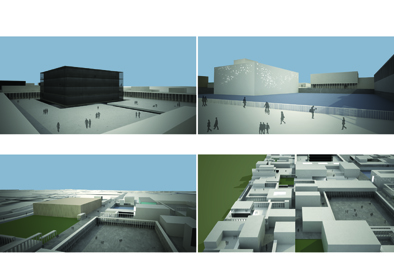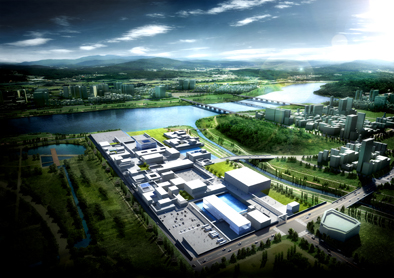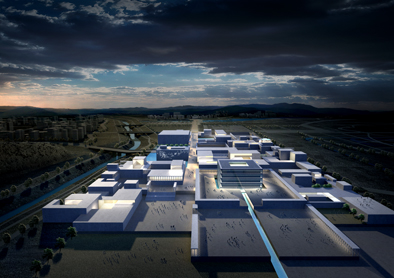
|
¼¼Á¾½Ã ±¹¸³¹Ú¹°°ü´ÜÁö ±¹Á¦Çö»ó-1Â÷ ÀÔ¼±ÀÛ |

|
Process Utopian fortification _ one & multiple The power of nature is, without doubt, enormous. We dare not to control or overcome that power. Instead, we intend to borrow and utilize the least parts of it. That's why we made a clear decision to construct a citadel, namely, an eternal palace of the public, or the gigantic city of the museums by using the method of compactness. Rather than trying to make architectural elements in the site have organic relationship with existing context in Sejong City, we tried to make them separated from the outside and integrated intensively. As a strategy, functional programs, other than ones for open air space such as exterior deck and riverside park, are centralized in a grand stone wall, the purpose of which is to make up a paradise separated from the world outside. With a marine image, it can be an isolated island, or a titanic ship navigating an expand ocean. It can also be an autonomous citadel in an old history built up to defend itself from any foreign forces. In it, you can meet what you have expected, that is, enjoyable, entertaining, educational and cultural experience. |
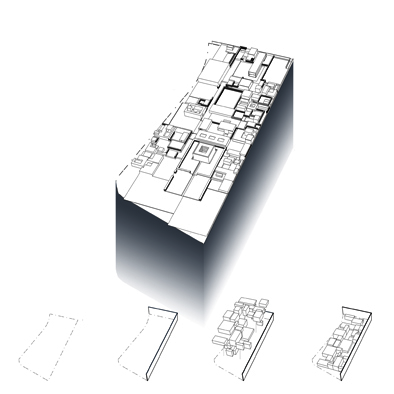

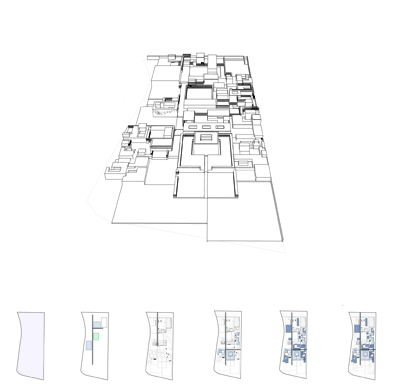
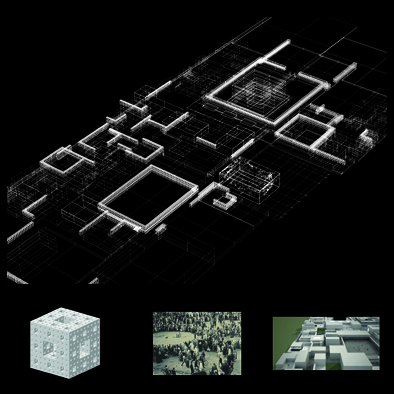
|
Vibrating center _ spatial structure Filled with continuous change and unexpected variables, modern society does not try to limit the space to a fixed center and its surroundings or under a clear hierarchical system. Instead, fragmented centers or multiple irregular and intertwined centers exist in a continuous chaos, moving about vibrantly. In their interactions, countless incidents happen and a variety of relationships are formed. In a complicated system wherein centricity and symmetry are gone, repetitive properties that are equal to each other yet subtly different properties break the totalitarian chains free, providing a rhythmical environment in an infinite space. The intent of such de-central, un-central, and multi-central space is also applied to our museum complex in order to form pluralistic yet dismantling structures. The key issue that we suggest is a layout plan without ranks. Save for a few definite infrastructure such as main entry road, plaza, and parking lot, each of the other diverse programs has been replaced by a unique room (or museum) of its own, laid out on a single plane. All these spaces are treated on equal footings with each other. Each room has unique properties while simultaneously allowing individual access thanks to the moving line system connected to each space. Like a maze, a great variety of spaces are formed here. In the center of this colony of museums, the small and large exterior spaces create differences in density, while big and small location traits are formed within the large castle that is the entire complex. In addition, in establishing our space we intend to unify the structure with the dividing walls to further underpin the independence of each unit space, while creating multiplicity of space in the simple system that is a collection of similar rooms for the museum complex.
|
|
Valley of time _ purification access IIt is out of our intention to make any distinction, by dichotomy, between something of daily life and something special experience. Rather, it is within our scope to make a subtle gradation of susceptibility for visitors, in accordance with the way along their pathway through the main entrance. The main pedestrian access - which is 15-25 meters wide and 500 meters long - to the symbolic plaza of the absolute house (National Archives Museum) which is located in the end of the complex, it works both as a process for purification of mind for the visitors as they approach the museums, and as a method of promoting empathy towards the attractiveness of the open space in the riverside makes. This will help those who visit forget about the world outside, and act as a road to a shrine citadel. The main access is composed of several phases Pond in the entryway, sunken plaza of the central area, water space in Children Museum, symbolic plaza by the National Archives Museum - in sequence. They play a role to connect different levels among the museum sites and, at the same time, provide us with dynamic approach by juxtaposing architectural elements of different speed. But it also maximizes your sensitivity from reversed space when you meet a large deck in the riverside, and it can also make an allusion to the entrance of cultural plaza. |
|
|
| plan |
|
|
